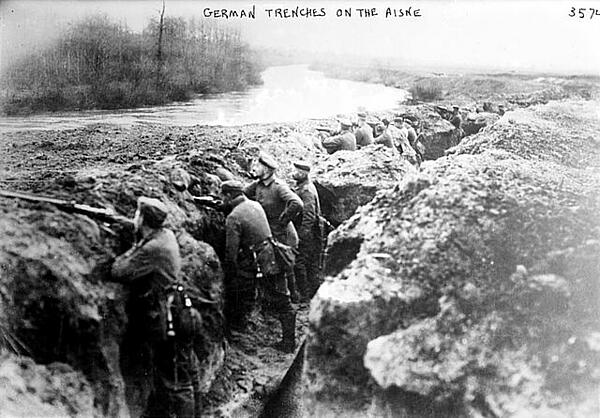The Second Battle of the Aisne
The Second Battle of Aisne was the main part of the Nivelle Offensive, which took place in April 1917.
The Nivelle Offensive was a plan developed by Robert Nivelle, who wanted a large attack on the German forces along the River Aisne that would be successful in 48 hours with the loss of just 10,000 men.
Nivelle had already made a name for himself at the Battle of Verdun in 1916 as the commander who had recaptured Fort Douaumont. In December 1916, he was appointed Commander-in-Chief of the French Army and he began devising a plan that combined an artillery bombardment with a huge infantry attack.
This became known as the Nivelle Offensive and Nivelle soon gained support from Prime Minister Aristide Briand, despite opposition from Pétain and Haig.

On 4th April, the Germans launched a small surprise attack on the French lines that seemed inconsequential. However, they captured a copy of the Nivelle Offensive and so had a huge advantage over the Allies.
The Germans learned that the attack would be preceded by an artillery bombardment so they placed as many men as possible in the nearby quarries. They also placed 100 machine guns in every kilometre of the front to give them significant fire power.
On 16th April 1917, nineteen divisions of the French 5th and 6th Armies attacked German positions on the Aisle along an 80km front. Facing an informed army on higher ground with fortified defences, the French lost 40,000 men on the first day.
On 17th April, the French 4th Army made a second attack on the German lines that was also repelled. The artillery barrage - favoured by Nivelle - was used incorrectly and dropped in front of the French, killing many of the men. Those who weren’t killed were left attacking the German front alone with machine guns firing across the battlefield.
Nivelle refused to scale down the attacks, which continued until May. While there were successes - with part of the Hindenburg Line captured at Chemin des Dames - they came at great expense to the Allied troops.
Eventually the attacks were called off - on 9th May - and while the French had captured land held by the Germans, as well as 20,000 German prisoners, they lost around 187,000 men in the process.
The French Army faced mutiny and Nivelle was sacked as Commander-in-Chief and replaced by Pétain. At the end of the year, Nivelle was posted to North Africa, where he remained until the end of ![]() World War One.
World War One.
MLA Citation/Reference
"The Second Battle of the Aisne". HistoryLearning.com. 2025. Web.
